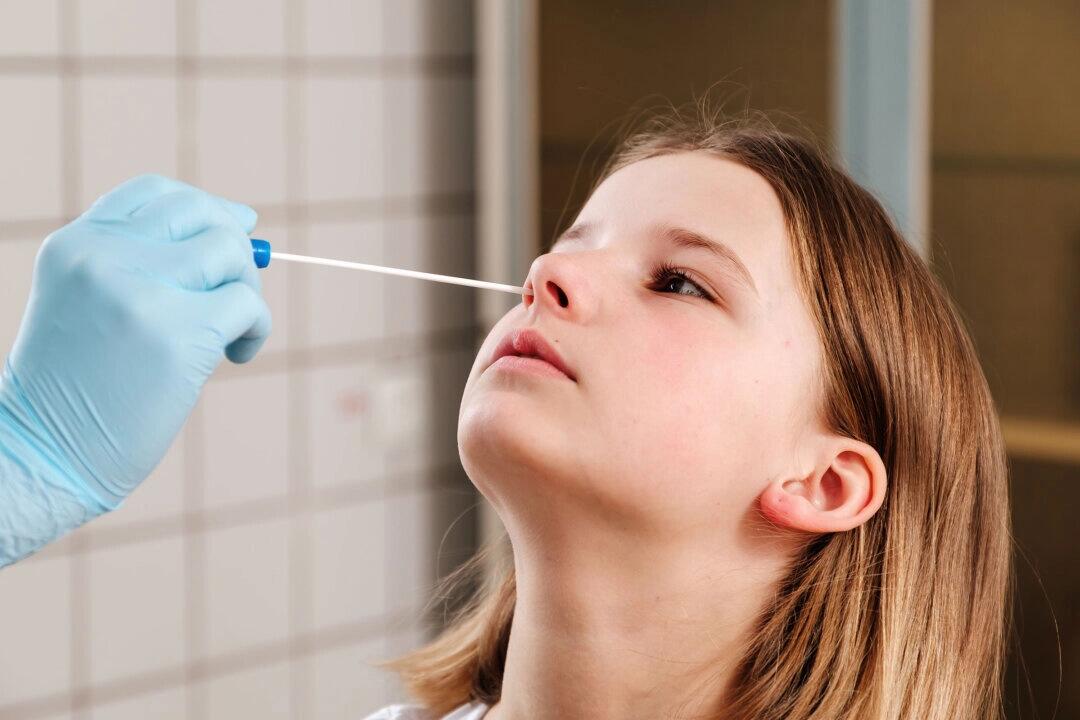First-Of-Its-Kind Study Explains Why Some People Don't Get COVID-19
Authored by Marina Zhang via The Epoch Times (emphasis ours),
Researchers have discovered why some people remain uninfected by the COVID-19 virus—even after their nasal cavities are exposed to it.

According to a recent study, these people have faster and more subtle immune responses than those who develop symptomatic COVID-19.
“These findings shed new light on the crucial early events that either allow the virus to take hold or rapidly clear it before symptoms develop,” Dr. Marko Nikolić, senior author of the study and honorary consultant in respiratory medicine at the University College London, said in the press release.
The study, published in Nature on Wednesday, was a human challenge study conducted by researchers from the UK and the Netherlands. It is the first of its kind wherein participants were deliberately exposed to SARS-CoV-2, the virus that causes COVID-19.
Researchers recruited 16 young, healthy participants under 30 for the study. None had comorbidities, and none had ever previously been infected with COVID-19 or vaccinated.
Before the study received peer review, a preprint of it was made available online in April 2023.
3 Different Immune Responses
The 16 individuals responded to the virus exposure differently and were grouped accordingly.
The first group contained six symptomatic people. The study authors categorized them as having sustained infections.
People in the second group were asymptomatic but still tested positive for COVID-19 with PCR tests. These participants were categorized as having transient infections.
The third type of people were asymptomatic and continuously received negative COVID-19 PCR test results. The authors confirmed that these participants were infected but cleared their infections so rapidly that the infections were dubbed “abortive.”
The second and third groups, who had asymptomatic COVID-19, had faster or more subtle immune responses, according to the authors.
On Day 1, the authors detected immune cells that migrated to the nose—the site of infection—in the asymptomatic groups.
However, people who tested negative for COVID-19 recruited fewer immune cell types, while the COVID-19-positive group recruited all immune cell types.
Symptomatic people with sustained COVID-19 infections had slower and more systematic immune responses. These participants had all types of immune cells going into the nose on Day 5 rather than Day 1.
Genetic Factors
Individuals with high expression of specific genes, such as HLA-DQA2, “are better at preventing the onset of a sustained viral infection,” the authors wrote.
Other studies have shown that increased activity of HLA-DQA2 in the blood is associated with milder COVID-19 progression.
HLA-DQA2 is one of many human leukocyte antigen (HLA) genes. HLA genes make proteins displayed on the cell surface. When pathogens infect cells, HLA proteins signal to immune cells that they have been infected.
The authors said their data confirm that HLA-DQA2 activity protects against further production of SARS-CoV-2 virus in infected cells.
Symptomatic People Had Systematic Responses
Only people with symptomatic COVID-19 displayed systematic interferon responses. Interferons are messengers of the immune system that help reduce or aggravate immune and inflammatory activities.
The authors were surprised to find that interferons in the blood were activated before those at the infection site. Interferon activity in the blood peaked on Day 3 of the infection; however, interferon activity at the infection site—the nose—was not detected until Day 5.
In the press release, the authors said that slow immune responses in the nose could have allowed the infection to establish itself quickly.
Asymptomatic people did not have systemic interferon reactions and rarely had infected cells.
Unsurprisingly, “infected cells were almost exclusively found” in the nasal cavities of symptomatic people, the authors wrote. The cells lining participants’ nasal cavities start producing SARS-CoV-2 virus, contributing to increased viral load.
“We now have a much greater understanding of the full range of immune responses, which could provide a basis for developing potential treatments and vaccines that mimic these natural protective responses,” said Dr. Nikolić.
NEVER MISS THE NEWS THAT MATTERS MOST
ZEROHEDGE DIRECTLY TO YOUR INBOX
Receive a daily recap featuring a curated list of must-read stories.


